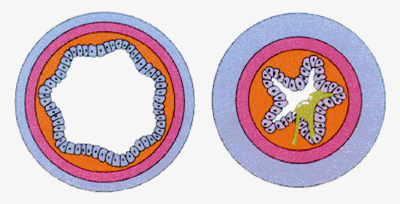Asthma In Focus
The Changes in Your Lungs
Asthma is an inflammatory disease that targets the airways of the lungs. The principal features of asthma are:
There is inflammation of the mucosa that lines the bronchi, which causes narrowing of the bronchial tubes. Most asthmatics have a small amount of inflammation in the airways all of the time. But this worsens during an ‘attack’.
The inflammation causes increased production of thick mucus in the bronchi. This mucus can clog the bronchial tubes and block the flow of air. Many people call this mucus plugs.
The airways become extra sensitive. The muscles in the airways may react to things like cold air, pollen, perfumes etc. which causes the muscles to contract causing bronchospasm. When the muscles contract, they tighten. This causes the bronchial tubes to narrow making it harder for air to flow in and out of the lungs.
When inflammation occurs in an obvious place, like a finger joint, is easy and quick to recognize. You may see redness, swelling, pain and warmth at the joint. With asthma, this inflammation is not as obvious because it occurs inside your lungs.

Symptom Recognition
Individuals will have various symptoms including cough, wheeze, shortness of breath, chest tightness and mucus production. Symptoms can occur any time during the day or night and vary from mild to severe. These symptoms may be brief or may last for several days. Symptoms may not be recognized until they are severe. If these symptoms become severe they may threaten your life. So it is important to recognize and treat even mild symptoms.